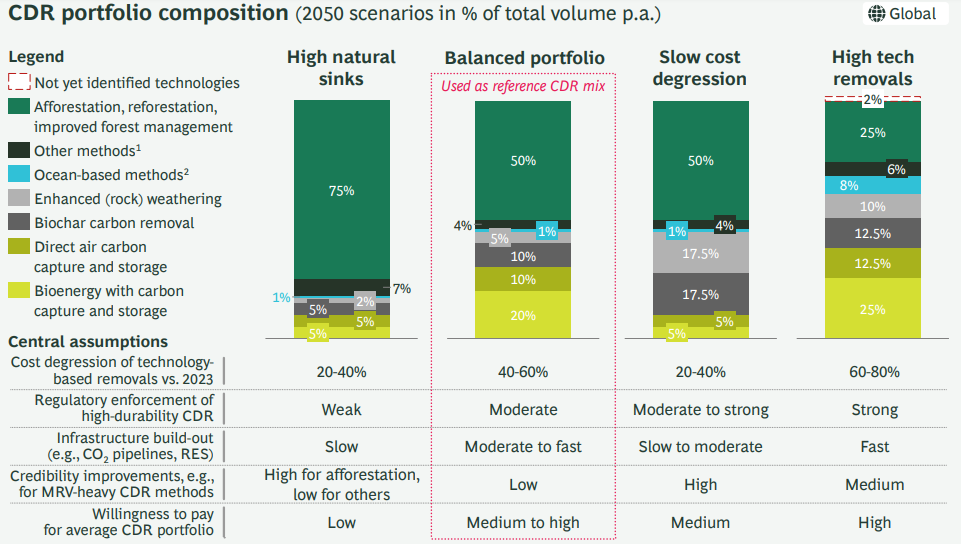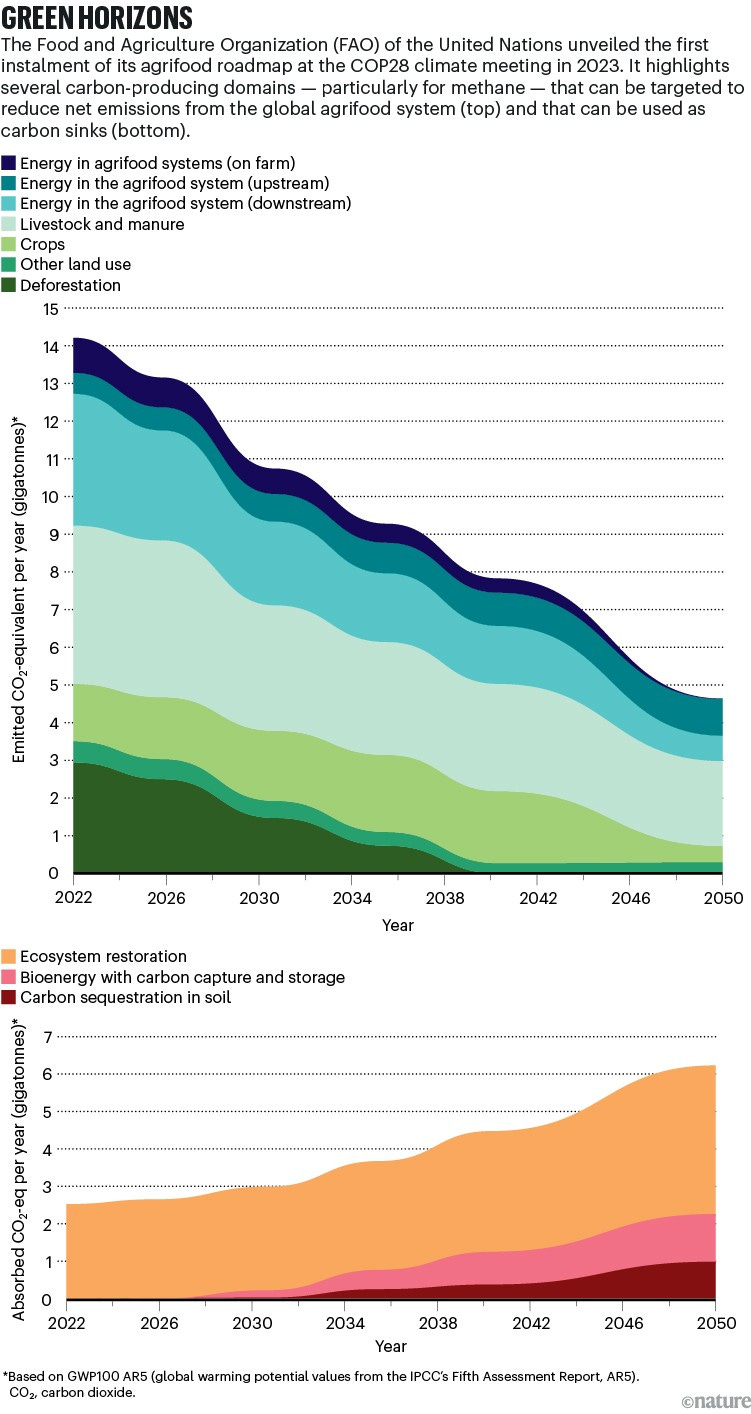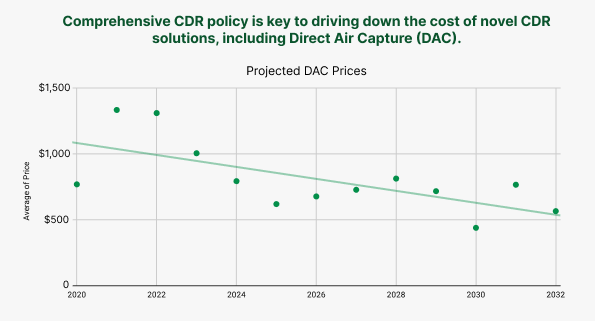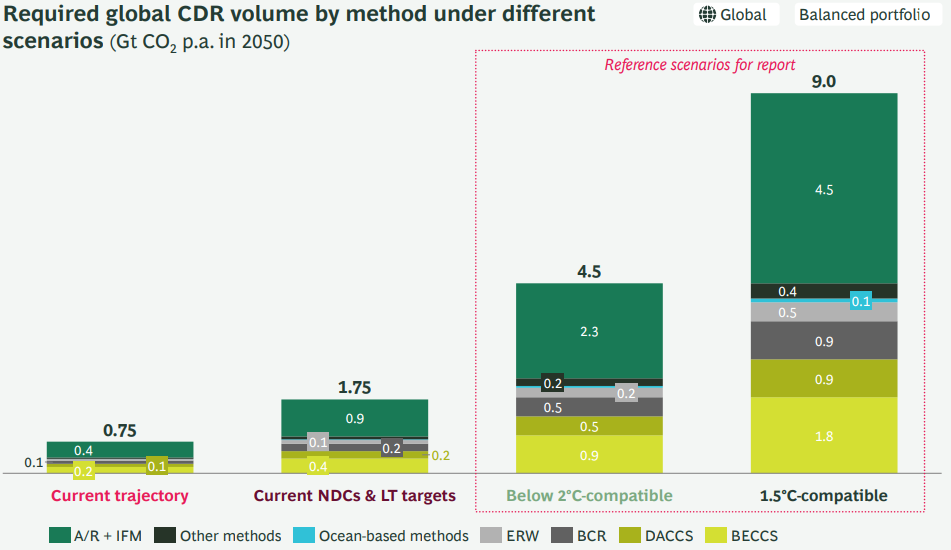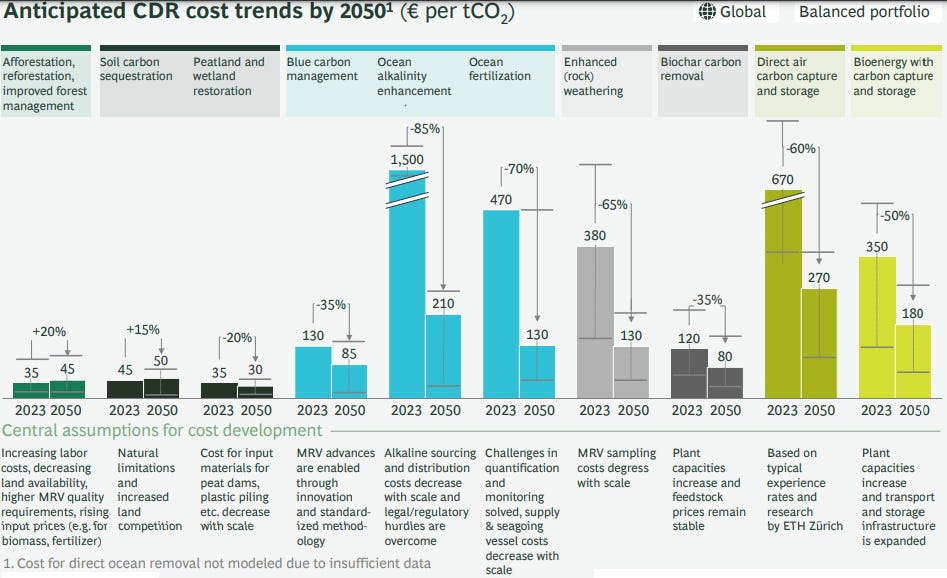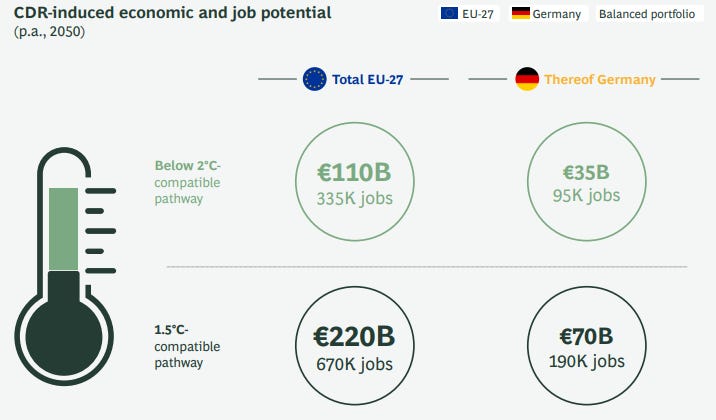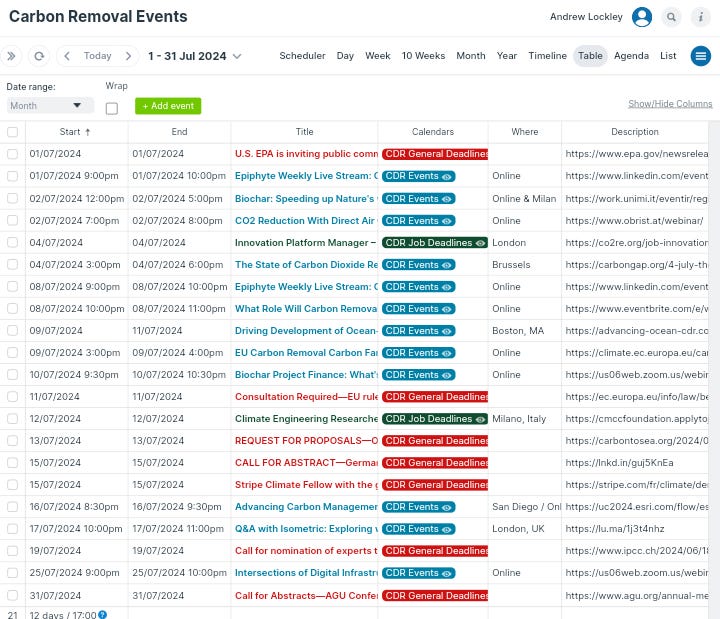CARBON REMOVAL WEEKLY SUMMARY (24 JUNE - 30 JUNE 2024)-WEEK#26
Links to recent scientific papers, web posts, upcoming events, job opportunities, podcasts, and event recordings, etc. on Carbon Dioxide Removal Technology.
💸COMMERCIAL NEWS
Heirloom to build two Direct Air Capture (DAC) facilities in Northwest Louisiana (Heirloom)
Denmark is investing €1.35B into biochar carbon removal and plans to subsidize biochar carbon removal by up to €300/t (via.ritzau)
Blusky Carbon Launches CO2 Removal And Secures Initial US $1.94 Million In Sales (Blusky Carbon)
Bern-based Neustark secures €64.3 million to exponentially accelerate carbon removal (EU Startups)
Sirona Technologies, an European DAC firm raises €6m to build Kenya pilot plant (Qunatum Commodity Intelligence)
Net Zero Company secures $5.5M Seed for blockchain-based carbon removal token (Tech eu)
BST Hyde Park festival organisers back carbon removals to address emissions (edie)
Mercedes F1 team invest in carbon removal initiatives (Black Book Motorsport)
Adaptavate To Produce Its First Full-Sized, Carbon-Negative Plasterboard (Carbon Herald)
SQUAKE closed a 7-figure deal with Carbonfuture & expanded its portfolio with durable CDR projects using Carbonfuture's data-powered MRV (LinkedIn)
O.C.O Technology commits to €20m carbon capture joint project (Let's recycle)
HeavyFinance Teams Up with CEEZER, a Platform Offering Carbon Removal and Reduction Projects (Crowdfund Insider)
NEG8 Carbon joined forces with the Walton Institute to refine NEG8’s Direct Air Capture technology by leveraging the power of AI and machine learning (NEG8 Carbon)
Audubon and Grassroots Carbon Announce First-of-its-Kind Partnership to Reward Landowners for Improving Habitats for Birds while Building Healthy Soils (Audubon)
Holcim Invests In Travertine to Advance Decarbonized Cement And Circularity (Holcim)
Exomad Green announced that they have successfully enhanced over 7,000 hectares of soil with carbon-sequestering biochar (LinkedIn)
World-first pricing, availability, and quality for biochar in a single marketplace (Supercritical)
MaRS Discovery District Carbon Dioxide Removal Pre-purchase (Pembina Institute)
HEMPALTA Introduces Biochar Derived from Industrial Hemp, Further Establishes Hemp Carbon Sequestration Activity, and Grants Stock Options (Newsfile)
Nuada And Buzzi Start CO2 Capture Trials For Cement Decarbonization (Carbon Herald)
Vattenfall Signs Deal for Green Cement with Cleantech Startup Cemvision (ESG Today)
📝RESEARCH PAPERS
Magnesium hydroxide addition reduces aqueous carbon dioxide in wastewater discharged to the ocean
Kitidis, V., Rackley, S. A., Burt, W. J., Rau, G. H., Fawcett, S., Taylor, M., ... & Fileman, T. (2024). Magnesium hydroxide addition reduces aqueous carbon dioxide in wastewater discharged to the ocean. Communications Earth & Environment, 5(1), 354.
Synopsis: Seawater holds valuable minerals, often scarce and costly on land. Currently, only highly concentrated minerals are mined from the sea. With land-based mining facing depletion, water and energy demands, and environmental issues, seawater mining is appealing. This paper reviews methods for extracting minerals from seawater and desalination brines, covering solar evaporation, electrodialysis (ED), membrane distillation crystallization (MDC), and adsorption/desorption, and suggests ways to overcome extraction challenges.
Assessing the future impact of 12 direct air capture technologies
Hu, Y., Gani, R., Sundmacher, K., & Zhou, T. (2024). Assessing the future impact of 12 direct air capture technologies. Chemical Engineering Science, 120423.
Synopsis: DAC is crucial for reducing atmospheric CO2 and mitigating the greenhouse effect. This article compares the CO2 emissions of 12 DAC technologies across the EU, USA, and China from 2023 to 2050. Emissions generally decline over time, with Europe showing the best performance, followed by the USA and China. Currently, many DAC technologies can't achieve net-negative emissions, particularly in China. By 2050, most technologies improve significantly. Fossil fuel use, especially coal, hinders net-negative emissions. Electrochemical technologies perform best, especially with renewable power, while steam-based sorbent regeneration benefits from low-carbon energy. High-temperature calcination technologies perform worst due to high-emission heat generation.
The complementary role of carbon dioxide removal: A catalyst for advancing the COP28 pledges towards the 1.5 °C Paris Agreement target
Acen, C., Bamsiile, O., Cai, D., Ukwuoma, C. C., Obiora, S., Huang, Q., ... & Adun, H. (2024). The complementary role of carbon dioxide removal: A catalyst for advancing the COP28 pledges towards the 1.5° C Paris Agreement target. Science of The Total Environment, 174302.
Synopsis: Addressing climate change by limiting global temperature rise to 1.5 °C by 2100 demands transforming energy, land use, and sustainability policies. At COP28, nations pledged to triple renewable energy to 11,000 GW by 2030 and boost energy efficiency. The FAO introduced a roadmap to make the Agri-food system a carbon sink. Carbon dioxide removals are vital for net-zero targets, aiding in residual emissions post-mid-century. This paper evaluates these policies' impacts, finding that COP28 pledges and the FAO roadmap result in a 2 °C warming, missing the 1.5 °C goal. Shutting fossil plants cuts emissions significantly without new CDRs. Agricultural soil carbon and biochar represent 47–58 % of CDR. While CDRs aid climate goals, they must complement emission reductions and prompt detailed roadmaps, with a focus on nature-based CDR methods.
Sustainability performance of enhanced weathering across countries: A triple bottom line approach
Oppon, E., Koh, S. L., & Eufrasio, R. (2024). Sustainability performance of enhanced weathering across countries: A triple bottom line approach. Energy Economics, 107722.
Synopsis: Enhanced weathering (EW), which uses crushed silicate rocks on croplands for carbon capture, is a promising negative emission technology. This research evaluates the triple bottom line sustainability of EW in eight top-emitting countries using an extended input-output model. Findings show that EW's sustainability is more influenced by environmental and social metrics than economic ones. Emerging economies (Brazil, Russia, India, China) have lower economic sustainability due to high working hours impact but gain more socio-economic benefits than developed countries (UK, France, Germany, USA). Better sustainability outcomes require reducing emissions, energy use, and improving labor rights and safety in silicate rock production.
Review on CO2 removal from ocean with an emphasis on direct ocean capture (DOC) technologies
Karunarathne, S., Andrenacci, S., Carranza-Abaid, A., Jayarathna, C., Maelum, M., Skagestad, R., & Haugen, H. A. (2024). Review on CO2 removal from ocean with an emphasis on direct ocean capture (DOC) technologies. Separation and Purification Technology, 128598.
Synopsis: CO2 capture and removal are key to combating climate change. This article explores ocean-based negative emission technologies that enhance the ocean's CO2 sink potential. Specifically, it examines electrochemical ocean capture (EOC) and ocean alkalinity enhancement (OAE). EOC approaches, including bipolar membrane electrodialysis (BPMED), three-chambered electrolytic cation exchange module (E-CEM), electrochemical hydrogen looping (EHL), and asymmetric chloride-mediated electrochemical processes, show promising results. EHL achieves up to 91% CO2 capture with 2.4 GJ/tonne electricity consumption, while asymmetric chloride-mediated processes capture 87% with 2.8 GJ/tonne. The article discusses potential challenges and solutions for large-scale ONET implementation.
On the emission-path dependency of the efficiency of ocean alkalinity enhancement
Schwinger, J., Bourgeois, T., & Rickels, W. (2024). On the emission-path dependency of the efficiency of ocean alkalinity enhancement. Environmental Research Letters.
Synopsis: OAE modifies surface ocean chemistry to boost atmospheric CO2 uptake. The efficiency of OAE depends on the ocean's background state, which will change significantly by the century's end. Using Earth system model simulations, we show that doubling (quadrupling) pre-industrial CO2 levels increases OAE efficiency by about 18% (29%), from 0.76 to 0.90 (0.98). Half of this effect stems from higher sensitivity of CO2 sequestration to alkalinity; the rest is due to more anthropogenic emissions being absorbed by a high-alkalinity ocean. However, if atmospheric CO2 drops due to large-scale land-based CDR, OAE efficiency declines. An overshoot pathway relying on land-based CDR shows this decline post-peak CO2. Assuming constant, present-day OAE efficiency in assessments could lead to inefficient OAE implementation.
More Efficient and Lower Energy-Intensive Process for Direct Air Capture
Jamshidnejad, M., & Asadinasab, M. (2024). More Efficient and Lower Energy-Intensive Process for Direct Air Capture.
Synopsis: Direct air capture (DAC) technologies use chemical or physical sorbents to remove CO2 from air, but are energy-intensive due to low CO2 concentrations. This study examines a DAC plant using an aqueous basic solution to capture one megaton of CO2 annually. An experimental packed tower shows that increasing CO2 concentration in the input stream enhances CO2 absorption rates, especially at lower concentrations. Reducing the input air stream by 40% and recycling 16% of captured CO2 boosts efficiency by 30% and cuts fan energy by 40%. Optimizing the DAC process lowers the cost per ton of captured CO2 to under $87.
Ultra-Efficient Electrolytic Ocean Carbon Removal Through Capacitive Decarbon Reactors
Zhu, Y., Ou, Y., Fuhrman, J., Lin, M., Zuo, K., Zhao, H., & Zhang, Z. (2024). Ultra-Efficient Electrolytic Ocean Carbon Removal Through Capacitive Decarbon Reactors.
Synopsis: Direct ocean capture (DOC) is a promising technique for reducing residual CO2 but is energy-intensive and can impact marine ecosystems. We introduce a capacitive decarbon (CDC) reactor that converts carbonate ions into CaCO3 using calcium ions from seawater and renewable electricity. After optimizing the reactor, the CDC achieves ocean carbon removal with a low energy consumption of 16 kJ mol−1 CO2, rising to 107 kJ mol−1 CO2 with seawater intake and pre-treatment. A global analysis model shows this approach could remove 360-1,670 million tonnes of CO2 by 2050-2100, representing 4.55%-14.82% of global carbon sequestration. The CDC reactor's high efficiency suggests it could be a viable carbon sequestration solution.
Recalcitrant dissolved organic matter in lakes: a critical but neglected carbon sink
Xia, F., Zhou, Y., Zhou, L., Zhang, Y., & Jeppesen, E. (2024). Recalcitrant dissolved organic matter in lakes: a critical but neglected carbon sink. Carbon Research, 3(1), 47.
Synopsis: Lakes are hotspots for the biogeochemical processing of carbon, including dissolved organic matter (DOM). A less degradable fraction of DOM, preserved for a long time, can be categorized as recalcitrant DOM (RDOM). Lake RDOM is an important but neglected carbon sink, and its characteristics and transformation processes remain largely unknown.
Estimation methods of wetland carbon sink and factors influencing wetland carbon cycle: a review
Li, L., Xu, H., Zhang, Q., Zhan, Z., Liang, X., & Xing, J. (2024). Estimation methods of wetland carbon sink and factors influencing wetland carbon cycle: a review. Carbon Research, 3(1), 50.
Synopsis: Wetlands are vital carbon sinks, absorbing greenhouse gases and mitigating global warming. Accurate estimation of wetland carbon content is essential but challenging due to the complex carbon cycle influenced by climate, topography, water levels, vegetation, and soil types. Most research focuses on individual factors, ignoring interactions, leading to measurement uncertainties. This paper elucidates the wetland carbon cycle, summarizes influencing factors, and explores their interplay. It reviews current measurement methods, proposes combining machine learning, identifies existing difficulties, and offers suggestions for future wetland carbon sink estimation and management.
Sequencing Carbon Dioxide Removal into the EU ETS
Sultani, D., Osorio, S., Günther, C., Pahle, M., Sievert, K., Schmidt, T., ... & Edenhofer, O. (2024). Sequencing Carbon Dioxide Removal into the EU ETS.
Synopsis: Novel Carbon Dioxide Removal technologies are emerging, fueled by voluntary carbon markets and specific policies. Sustaining momentum requires a long-term policy path to scale capacities and limit global warming below 2°C. Integrating removals into carbon compliance markets, like the EU ETS, could enhance investor certainty despite current allowance prices being lower than removal costs. This paper addresses the unclear integration process by (1) proposing an economically desirable regulatory framework, (2) analyzing direct integration of removals into the EU ETS using the LIMES-EU model, finding over 60 Mt of CDR entering the market annually by 2050, and (3) deriving a three-stage integration path to mitigate risks like abatement deterrence and excessive biomass use.
Projected poleward migration of the Southern Ocean CO2 sink region under high emissions
Mongwe, P., Gregor, L., Tjiputra, J., Hauck, J., Ito, T., Danek, C., ... & Monteiro, P. M. (2024). Projected poleward migration of the Southern Ocean CO2 sink region under high emissions. Communications Earth & Environment, 5(1), 232.
Synopsis: The Southern Ocean, crucial for carbon uptake, faces uncertain changes under climate change. Earth System Models project a shift in CO2 uptake from Subtropical to Antarctic regions. Warming-induced sea-ice melt and ocean changes will alter carbon dynamics, reducing winter degassing and shifting to solubility-driven uptake in Antarctica. This hybrid uptake mode will amplify biologically-driven summertime uptake, reshaping the Southern Ocean's carbon sink.
Enhancing carbon dioxide uptake in biochar derived from husk biomasses: Optimizing biomass particle size and steam activation conditions
Villardon, A., Alcazar-Ruiz, A., Dorado, F., & Sanchez-Silva, L. (2024). Enhancing carbon dioxide uptake in biochar derived from husk biomasses: Optimizing biomass particle size and steam activation conditions. Journal of Environmental Chemical Engineering, 12(5), 113352.
Synopsis: This study focuses on optimizing biochars from almond, pistachio, and nut shells for CO2 adsorption by varying particle size and steam activation conditions. PS, AS, and NS biochars achieved notable CO2 adsorption capacities of 2.81, 2.12, and 1.76 mmol/g, respectively, underscoring their potential in sustainable carbon capture technologies. The research highlights biomass heterogeneity and morphological changes in biochars, enhancing their carbon content and efficacy as CO2 adsorbents.
The role of negative emissions technologies in the UK’s net-zero strategy
Bakkaloglu, S., Mersch, M., Sunny, N., Markides, C. N., Shah, N., & Hawkes, A. (2024). The role of negative emissions technologies in the UK’s net-zero strategy. Cell Reports Sustainability.
Synopsis: Using a multiscale modeling approach, this study explore NETs’ potential for a single country, the United Kingdom (UK). Here, we report that the UK has cost-effective potential to remove 79 MtCO2 per year by 2050, rising to 126–134 MtCO2 per year with well-integrated NETs in industrial clusters. Results highlight that biomass gasification for hydrogen generation with CCS is emerging as a key NET, despite biomass availability being a limiting factor. Moreover, solid DACCS systems utilizing industrial waste heat integration offer a solution to offsetting increases in demand from transportation and industrial sectors. These results emphasize the importance of a multiscale whole-systems assessment for integrating NETs into industrial strategies.
Investigation of effectiveness of KOH-activated olive pomace biochar for efficient direct air capture of CO2
Monteagudo, J. M., Durán, A., Alonso, M., & Stoica, A. I. (2025). Investigation of effectiveness of KOH-activated olive pomace biochar for efficient direct air capture of CO2. Separation and Purification Technology, 352, 127997.
Synopsis: This study explores the activation of olive pomace biochar with potassium hydroxide (KOH) for CO2 adsorption, crucial for mitigating climate change. Biochar activated at 750°C under N2 was evaluated with different biochar/KOH ratios (1:0.5, 1:1, 1:2). Characterization included chemical composition, surface area, pore structure, morphology, and functional groups. Adsorption isotherms were analyzed using Langmuir, Freundlich, and Temkin models, while kinetic studies employed pseudo-first order, pseudo-second order, Avrami, and Elovich models. Intra-particle diffusion assessed mass transfer mechanisms, and biochar regeneration for CO2 reuse was explored via temperature modification.
Common-Pool Resource Management Problems in Enhanced Weathering Deployments for Carbon Dioxide Removal
Woollen, B., & Planavsky, N. (2024). Common-Pool Resource Management Problems in Enhanced Weathering Deployments for Carbon Dioxide Removal.
Synopsis: Limiting global warming to below 2°C necessitates scaling up annual CDR efforts significantly, alongside decarbonization. Public trust in CDR is low due to ineffective carbon offsets. Durable CDR technologies, like enhanced weathering (EW), promise long-term carbon removal, but their open-system nature poses challenges, such as secondary carbonate precipitation. We advocate for using Elinor Ostrom’s principles to manage common-pool resources effectively in EW projects, crucial as these technologies expand globally and governance norms evolve.
Iron Chelation in Soil: Scalable Biotechnology for Accelerating Carbon Dioxide Removal by Enhanced Rock Weathering
Epihov, D. Z., Banwart, S. A., McGrath, S. P., Martin, D. P., Steeley, I. L., Cobbold, V., ... & Beerling, D. J. (2024). Iron Chelation in Soil: Scalable Biotechnology for Accelerating Carbon Dioxide Removal by Enhanced Rock Weathering. Environmental Science & Technology.
Synopsis: Enhanced rock weathering is gaining traction as a CDR strategy, but its efficiency and costs need improvement. This study integrates multiomics analyses, dissolution experiments, and soil incubations to propose enhancing EW by manipulating soil iron chelators. Microbial siderophores increase iron uptake, crucial for accelerating EW on basalt. Field trials and lab studies show siderophores and synthetic chelators like EDDHA boost CDR rates up to 2.5-fold, potentially reducing costs by $77 per ton of CO2 sequestered. This biotechnological approach addresses EW’s scalability and economic viability in combating climate change.
Enhanced weathering for CO2 removal using carbonate-rich crushed returned concrete; a pilot study from SE Ireland
McDermott, F., Bryson, M., Magee, R., & van Acken, D. (2024). Enhanced weathering for CO2 removal using carbonate-rich crushed returned concrete; a pilot study from SE Ireland. Applied Geochemistry, 106056.
Synopsis: A pilot study in SE Ireland investigated using crushed returned concrete (CRC) as a soil amendment for CDR through enhanced weathering (EW). Application of 7.5 tonnes/ha over 10 months significantly increased soil pH and calcium concentrations. Soil bicarbonate levels initially rose but gradually declined due to exhaustion of fine-grained fractions. Results suggest potential CDR rates up to 0.52 tonnes CO2/ha, limited by bicarbonate export rather than weathering rates. Optimizing material efficiency could enhance CDR viability, with a suggested 11% discount for CO2 emissions from processing and application.
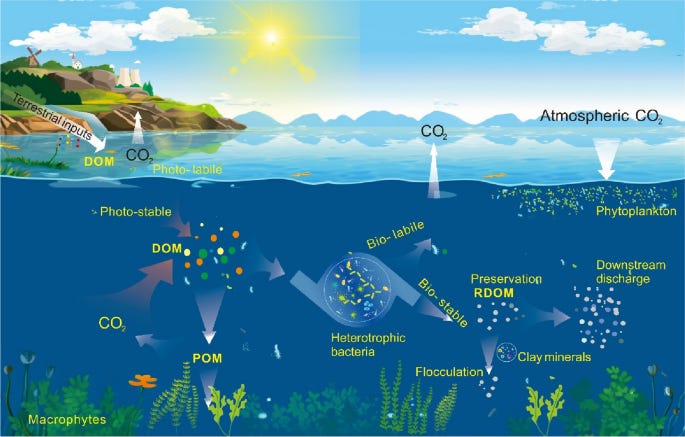
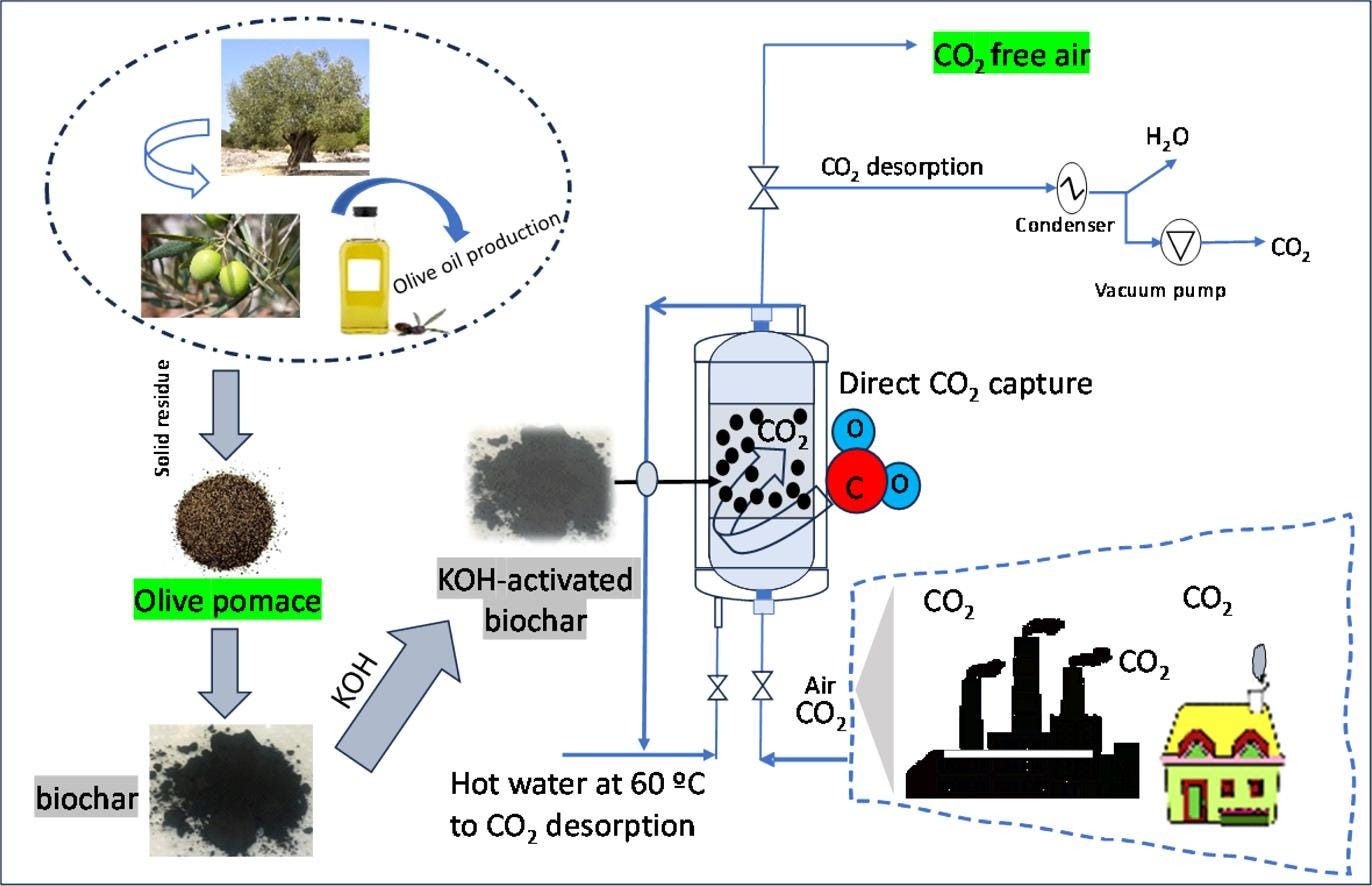
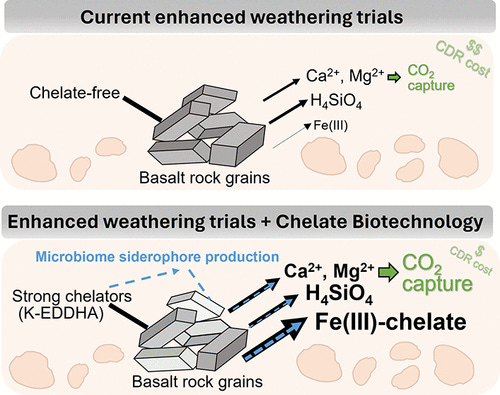
📰WEB POSTS
How pulling carbon out of the ocean may help remove it from the air (National Geographic)
How Canadian Carbon Removal Can Help Create a Net-zero Future (Carbon Lock Tech)
Carbon-capture projects launch in Los Angeles County as CO₂ levels reach global records (Los Angeles Times)
How farming could become the ultimate climate-change tool (Nature)
How To Identify the Ideal Site for Geological Storage of CO2 (TWA)
Do We Really Need Carbon Removal? 5 Insights From World’s Top Experts (Forbes)
Bottled up in a VCM jam? Try insetting (Climagination Substack)
We’ve been accidentally cooling the planet — and it’s about to stop (The Washington Post)
How to scale carbon removal in Canada (Carbon Gap)
Negative emissions: Scientists debate role of CO2 removal in tackling climate change (Carbon Brief)
Advancing Research and Development of Marine Carbon Dioxide Removal: Ocean Visions, Running Tide, and the Role of Start-Ups (Ocean Visions)
How an early-stage Developer approaches funding for his biochar project (Reearthers)
Rewind, GeoEcoMar seek permit for Black Sea carbon storage study (Quantum Commodity Intelligence)
Carbon Removal’s Existential Question (Heatmap)
First Year Field Trials Of Biochar Show 16% Higher Grassland Yields (Carbon Herald)
The growing carbon debt (The Climate Brink)
📒THESIS
Climate Impact Analysis of Direct Air Capture Deployment
📃REPORTS
AlliedOffsets New Policy CDR Report! 5 Learnings About CDR Policy Landscape (AlliedOffsets)
$100bn for planet and people (BeZero)
A Manual for Biochar Carbon Removal (International Biochar Initiative)
Voluntary Carbon Markets: Potential, Pitfalls, and the Path Forward (CCAG)
Carbon Dioxide Removal—Europe and Germany's Role in Catalyzing a Trillion-Euro Industry (BCG)
Engaging Stakeholders in Your Carbon Dioxide Removal Research. Reflection Paper with Learnings & Recommendations from the CDRterra research programme (CDRterra)
🗓️UPCOMING EVENTS
(NEW) Biochar: Speeding up Nature's way of removing atmospheric carbon by University of Milan | 02 July 2024 | Online & Milan
(NEW) CO2 Reduction With Direct Air Capture Technology by Obrist Group | 02 July 2024 | Online
(NEW) The State of Carbon Dioxide Removal by Carbon Gap | 04 July 2024 | Brussels
Epiphyte Weekly Live Stream: Open Source Direct Air Capture by The OpenAir Collective | 08 July 2024 | Online
What Role Will Carbon Removal Play Under Article 6 of the Paris Agreement? by Institute for Responsible Carbon Removal | 08 July 2024 | Online
EU Carbon Removal Carbon Farming Certification – Online Workshop on Peatland rewetting | 09 July 2024 | Online
Driving Development of Ocean-Based Carbon Removal Technologies with Innovations in MRV, Oceanographic Modelling & New Policy Frameworks to Reduce Global CO2 Emissions | 9-11 July 2024
Biochar Project Finance: What's available today and where do we want to go? by IBI & Kita | 10 July 2024 | Online (9:30pm)
Advancing Carbon Management: Insights from Land to Sea Using ArcGIS Tools | 16 July 2024 | San Diego / Online
(NEW) Q&A with Isometric: Exploring women-led innovation in Carbon Dioxide Removal (CDR) by Isometric | 17 July 2024 | London, UK
(NEW) Intersections of Digital Infrastructure and Carbon Removal by Carbon Business Council and Climate Collective | 25 July 2024 | Online
2nd Biochar Malaysia Association International Conference 2024 by International Biochar Initiative | August 13-14, 2024
Goldschmidt 2024 conference, Chicago | 18-23 August 2024
Carbon Unbound Europe | 11-12 September 2024
Carbfix Mineralization Summit 2024 | 12-13 September 2024
Grounding Carbon Farming at Wageningen University & Research by WIMEK in collaboration with SBL, ENP, NGO myclimate, and the farm "La ferme de Hyaumet" | 14-20 September 2024 | France
CO2NNECT 2024 by the Great Plains Institute's Carbon Action Alliance | 29 September - 01 October 2024 | Colorado
Bellona Climate Action Conference | 01 October 2024 | Brussels (Belgium)
Volcanoes and past climate: adventures with deep carbon | 12 October 2024 | Online & ExCeL London
IBI Biochar Study Tour: Italy by the Italian Biochar Association and the International Biochar Initiative | 16-18 October 2024 | Florence, Italy
(NEW) 5th EU Carbon Removals Expert Group meeting | 21-23 October 2024 | Online
How to apply biochar in sustainability management and accounting | German Biochar Forum | 18 November 2024
We have curated a “Carbon Removal Events Calendar.” Explore and stay informed about upcoming events, conferences, and webinars on Carbon Dioxide Removal technology. Sync specific events / all events to your default calendar to ensure you never miss out on important CDR updates.
GUIDELINES:
Sync selected events to your default calendar in these simple steps:
1) Click on the event you want to sync.
2) Tap the menu icon (three vertical lines) at the top left.
3) Choose 'Share.'
4) Pick your default calendar.
5) Save the event.
Sync the entire Teamup Calendar to your default calendar with these simple steps:
1) Tap the menu icon (three vertical lines) at the top right.
2) Choose 'Preferences.'
3) Click 'iCalendar Feeds.'
4) Copy the URL shown for 'CDR Events / CDR General Guidelines / CDR Job Deadlines.'’
5) Paste the URL into your default calendar settings.
6) Click 'Subscribe' or 'Add Calendar.'
For more detailed instructions, visit: https://calendar.teamup.com/kb/subscribe-to-teamup-icalendar-feeds/
You can directly sync all Carbon Removal events to your default calendars by pressing the link below:
💼JOB OPPORTUNITIES
Postdoctoral Researcher (Carbon Monitoring on US Rangelands) at Woodwell Climate Research Center | Falmouth, Massachusetts or remote
"Join Woodwell Climate’s soil carbon team as a Postdoctoral Researcher working on a multi-year project developing and deploying a carbon monitoring system for conservation practices across the Northern Great Plains Ecoregion. This position is part of a large team that includes researchers, conservation practitioners, and rangeland managers at National Fish and Wildlife Foundation, the National Audubon Society, World Wildlife Fund and Columbia University. The successful candidate will improve, parameterize, and implement a high-performance computing (HPC) platform-based modeling system which leverages remote sensing imagery, field measurements, and survey datasets with both machine learning and process-based models."
Mechanical engineer at Yama | Paris, France
"Yama is solving the biggest threat humanity ever faced: Climate Change with the ambitious goal to remove a billion tons of CO2 by 2050. Yama’s purpose **is to scale-up, industrialize and launch on the market** the lowest energy consumption scalable Direct Air Capture technology."
Climate Engineering Researcher (CDR/SRM) at CMCC | Milano, Italy | Deadline to apply: 12 July 2024
"Our Institute (European Institute on Economics and the Environment) is always looking for bright researchers motivated to work on the defining issue of climate change. For this position we are encouraging applications by researchers interested in modelling and assessing the implications of climate engineering interventions, specifically either Carbon Dioxide Removal (CDR) or Solar Radiation Management (SRM), as possible additional strategies to conventional mitigation ones. We have a portfolio of international research projects on both removing CO2 and CH4 (e.g. UPTAKE, REPAIR), and on assessing solar radiation modification (e.g. CO-CREATE, RFF). We are looking from one to two candidates to work on either research strand, or possibly combine them. We are interested in the integration of all key aspects of climate engineering, from the technical side to its socio-economic repercussion and its governance."
Modeling Engineer at Carbyon | Eindhoven, Netherlands
"Carbyon aims to restore the atmospheric carbon balance using breakthrough technology and unique machine design that scales economically and durably."
Analyst, Carbon Dioxide Removalat Pembina | Calgary, Edmonton, Toronto,
"As part of Business Renewable Centre Canada (BRC-Canada), the Carbon Dioxide Removal (CDR) Centre team at Pembina supports organizations purchasing carbon dioxide removal credits across Canada to reduce corporate emissions, and advocates for effective climate policies and regulatory improvements to enable CDR procurement."
Carbon Dioxide Removal Financing Manager at Negative Emissions Platform | Brussels, Belgium
"Negative Emissions Platform is a membership association advocating for better recognition and regulation of permanent atmospheric carbon and other greenhouse gas removal solutions.
This position offers a unique opportunity to become a part of a growing industry that is essential to reversing climate change, in a critical period for the industry’s growth. You’ll be part of a small team that is passionate about growing a small community of niche entrepreneurial climate defenders into a well-understood trusted and global powerhouse industry that goes beyond offering damage limitation and instead offers hope through solutions that can lower concentrations atmospheric greenhouse gases.
You’ll have responsibility for the critically important area of financing for this sector at a time when financing is recognised as one of the key bottlenecks our sector faces. You’ll lead our advocacy work vis-à-vis the EU, national governments, and international bodies like the UNFCCC and SBTI. You’ll also lead our efforts to develop closer dialogue and relationships for the CDR sector with the investor community. All of this in close cooperation with our fantastic members."
Electronics Engineer at Ucaneo | Berlin, Germany
"Ucaneo develop a pioneering biomimetic Direct Air Capture technology to remove CO2 from ambient air."
Program Manager, Farm Deployments at Lithos | Bellevue, Washington, United States | San Francisco, California, United States | Chicago, Illinois, United States
"Lithos accelerate mineral weathering by spreading basalt on croplands to increase dissolved inorganic carbon with eventual storage as ocean carbonates. Our technology uses novel soil models and machine learning to maximize CO₂ removal while boosting crop growth."
Field Services Manager, EU at Skytree | Amsterdam, Netherlands
"Skytree enables a transition to a world with cleaner Air for everyone. We do this by developing and deploying smart technology that captures atmospheric carbon dioxide, enabling its use or storage to combat climate change and aid society and businesses around the world."
Sorbent Semester Thesis at TUM Carbon Removal Initiative e.V. | Garching bei München, Bavaria, Germany
"This project deals with the investigation of bulk material behavior of activated carbon pellets for a carbon removal system. The "TUM Carbon Removal Initiative e.V." is a student initiative at the Technical University of Munich."
Office Manager at Pyreg GmbH | Dörth, Germany
"PYREG is a German manufacturer of carbonization plants for upcycling organic waste into high-quality CO₂-sequestering biochar and renewable heat."
Head of Regulatory Affairs at BeZero Carbon | Singapore
"BeZero Carbon’s mission is to scale investment in environmental markets that deliver a sustainable future. We are a carbon ratings agency. We equip world-leading organisations with the knowledge, tools and confidence to make better climate decisions. BeZero Carbon is the largest global ratings agency for the Voluntary Carbon Market."
Head of Carbon at Pur | Paris, France
"PUR is a global, impact-focused B-Corp specializing in supply chain sustainability. We design, develop, and implement nature-based solutions projects to help our corporate partners reduce their environmental footprint and meet their ESG targets. Many of PUR's projects fall within the categories of insetting, regenerative agriculture, agroforestry, forest conservation, and landscape restoration. These projects aim to introduce more sustainable agricultural practices, regenerate and preserve ecosystems, and socially and economically empower local communities."
Process Engineer at Sirona Technologies | Brussels, Belgium
"At Sirona Technologies, we are developing direct air capture (DAC) technology to remove CO2 from the air and combat climate change. We are a young startup and are now scaling up our prototypes into industrial machines ready for mass production."
Forest Carbon Scientist at Pachama | North America
"Pachama is a mission-driven company looking to restore nature to help address climate change. Pachama brings the latest technology in remote sensing and AI to the world of forest carbon in order to enable forest conservation and restoration to scale. Pachama’s core technology harnesses satellite imaging with artificial intelligence to measure carbon captured in forests. Through the Pachama marketplace, responsible companies and individuals can connect with carbon credits from projects that are protecting and restoring forests worldwide."
Registry Operations Manager at Isometric | London, UK
"Isometric is a carbon removal registry. We issue the world’s most scientifically rigorous carbon credits to help Fortune 100 companies tackle climate change and prevent greenwashing."
Master thesis on direct air carbon capture through electrochemistry at Carbon Atlantis | Ismaning, Bavaria, Germany
"Carbon Atlantis develop a first-of-a-kind, low-cost Direct Air Capture (DAC) technology to remove CO2 from the air. With partners, we utilize or permanently store the CO2 in rock carbonates."
Accounting and Finance Operations Lead Germany (80-100%) at neustark | Cologne, Germany
"At neustark, we’re all in for one mission: permanently removing one million tons of CO2 in 2030, and even more every year beyond that. Why? It’s a no-brainer: we want to enable a bright future for all future generations on our planet. And for that, we need to reduce and remove CO2, now."
🎙️PODCASTS
Can we Science our way to ocean carbon removal? | The Big Story
"Mess with the finely balanced ecosystem of the ocean? On purpose?! What could go wrong?! But the truth is, we've messed with it already. The oceans suck up a lot of our carbon, and you may have noticed they get hotter every year. But what if there was a way to store carbon in the ocean, possibly forever, where it wouldn't do any damage? Welcome to the world of marine geoengineering—a field gaining a lot of attention, as well as a lot of investment, including in Canadian companies. We might not understand the depths of the ocean's ecosystem enough to ensure we won't do anything truly horrible...but eventually we might have no option but to try it anyway."
Clearing the air: How the DOE is tackling carbon dioxide removal | Climate Now
"The US Department of Energy (DOE) was established in 1977 with two key missions: to carry out defense responsibilities relating to nuclear weapons, and to bring together under one department the “loosely knit amalgamation” of various energy projects which were, at the time, scattered across the United States government. The Department of Energy Organization Act created the Department to better coordinate national energy strategy in the face of new challenges – namely, two OPEC energy crises and the growing nuclear energy industry. Since then, the DOE’s responsibilities have evolved with the challenges that the country has faced.
Today, one key dimension of the DOE’s role in national energy security is supporting low-carbon energy production and carbon management projects. This role includes advancing Carbon Dioxide Removal, or CDR as the US will likely need to remove at least a billion metric tons of carbon dioxide from the atmosphere each year to meet its net-zero goals. We spoke with Rory Jacobson, the acting division director for Carbon Dioxide Removal in the Office of Fossil Energy and Carbon Management, or FECM to better understand the DOE’s role in advancing CDR."
Episode 1 - Marian Krueger | The CDR Procurement Guide
"This series has been created to help those with carbon emissions related obligations who need to complement their emissions reduction activity with carbon removal purchases. It is targeted specifically at the needs of buyers in private and public sector organizations [for example, heads of strategy, sustainability, procurement, finance, or operational risk], to address their questions and share early experience within this community. The first part of the series will deal with the fundamentals of the CDR topic. In the second we will hear from pioneer buyers. From there, we will take the format where you want it to go."
🎥YOUTUBE VIDEOS
Can we Science our way to ocean carbon removal? | The Big Story | CityNews
"Mess with the finely balanced ecosystem of the ocean? On purpose?! What could go wrong?! But the truth is, we've messed with it already. The oceans suck up a lot of our carbon, and you may have noticed they get hotter every year. But what if there was a way to store carbon in the ocean, possibly forever, where it wouldn't do any damage?
Welcome to the world of marine geoengineering—a field gaining a lot of attention, as well as a lot of investment, including in Canadian companies. We might not understand the depths of the ocean's ecosystem enough to ensure we won't do anything truly horrible...but eventually we might have no option but to try it anyway."
Workshop on Biochar CRCF Methodology Development | EUClimateAction
"On 18 June 2024, the European Commission's Directorate-General for Climate Action hosted a workshop on developing methodology for including Biochar within the Carbon Removals Certification Framework."
And there’s a gap in growth stage funding too | Tito - AirMiners
Towards cement and concrete as a carbon sink - #eicPathfinder Challenges | EU Innovation Council and SMEs Executive Agency
"EIC Programme Manager for architecture engineering construction technologies Franc Mouwen presents 2024 Pathfinder Challenge 'Towards cement and concrete as a carbon sink'."
Weekly Carbon Removal Updates from 24 June - 30 June 2024 | Carbon Removal Updates
🚨DEADLINES
U.S. EPA is inviting public comment on two tentative permits under the Marine Protection, Research and Sanctuaries Act for a research study on a potential climate change mitigation technique referred to as ocean alkalinity enhancement | Deadline to provide comments: 01 July 2024
(NEW) Consultation Required—EU rules on land use, land use change and forestry (LULUCF) – evaluation | Deadline: 11 July 2024
Ocean Alkalinity Enhancement Joint Learning Opportunity Q&A Session by Carbon to Sea Initiative and COVE | Proposals are due by 13 July 2024
Call for Abstract—German Biochar Forum 2024: How to apply biochar in sustainability management and accounting | Deadline to apply: 15 July 2024
Stripe Climate Fellow with the goal of seeding ideas to grow demand for Carbon Removal | Deadline: 15 July 2024
Call for nomination of experts to Scoping Meeting for Methodology Report on Carbon Dioxide Removal Technologies and Carbon Capture Utilization and Storage | Deadline: 19 July 2024
Call for Abstracts—AGU Conference | Submissions are open until 31 July 2024
CDR Sessions at AGU2024:
GC089 - Large-Scale Carbon Dioxide Removal: Potentials, Considerations, and Challenges
GC054 - Connecting Science and Monitoring, Reporting and Verification (MRV) Development for Cross-Pathway Carbon Dioxide Removal (CDR) Technologies
B088 - Science-Based Carbon Dioxide Removal (CDR) Strategies that Incorporate Monitoring, Measurements, Reporting, and Verification (MMRV)
OS027 - Modeling Approaches in Support of Ocean-based Carbon Dioxide Removal (CDR) Research
SY037 - Navigating Uncertainty: Assessing and Communicating Risk in Marine Carbon Dioxide Removal Research, Development, and Deployment
GC040 - Carbon Dioxide Removal at scale: Science, technology, policy, and market
GC133 - Scaling Potentials of Carbon Dioxide Removal Technologies: Approaches, Constraints and Challenges
B045 - Enhanced Weathering for Soil-Based Carbon Dioxide Removal: Potential and Challenges
GC022 - Advancing Monitoring, Reporting, and Verification (MRV) of In-Situ, Ex-Situ, and Marine CO2 Mineralization-based Carbon Dioxide Removal (CDR)
GC005 - Advancements in Enhanced Weathering for CO2 Removal in (Sub-)Tropical Environments: Integrating MRV, Geochemical Modeling, and Life Cycle Analysis
GC057 - Data-driven approaches to improved climate impact accounting for nature-based carbon removal
GC146 - Terrestrial enhanced rock weathering and downstream processes in soils, rivers, and oceans
B039 - Drivers of forest carbon losses and effective interventions to preserve carbon in forests worldwide
S018 - Geologic Carbon Storage
OS036 - The Impact of Climate Change and Human Activities on Carbon Sequestration in Coastal Wetlands and Strategies for Carbon Sink Enhancement
GC048 - Climate Intervention, Mitigation, Adaptation, and Restoration: Assessing the Risks and Benefits of Using Earth System Models for Guidance on Climate Action
GC004 - Advancements in Climate Intervention Research Technologies, Policies and Practices: Opportunities and Issues
U013 - Ocean Negative Carbon Emission Approaches for Mitigating Climate Change: Mechanisms, Practices and Governance
GC151 - The Impact of Physical and Environmental Constraints on Deployment of Direct Air Capture of CO2





